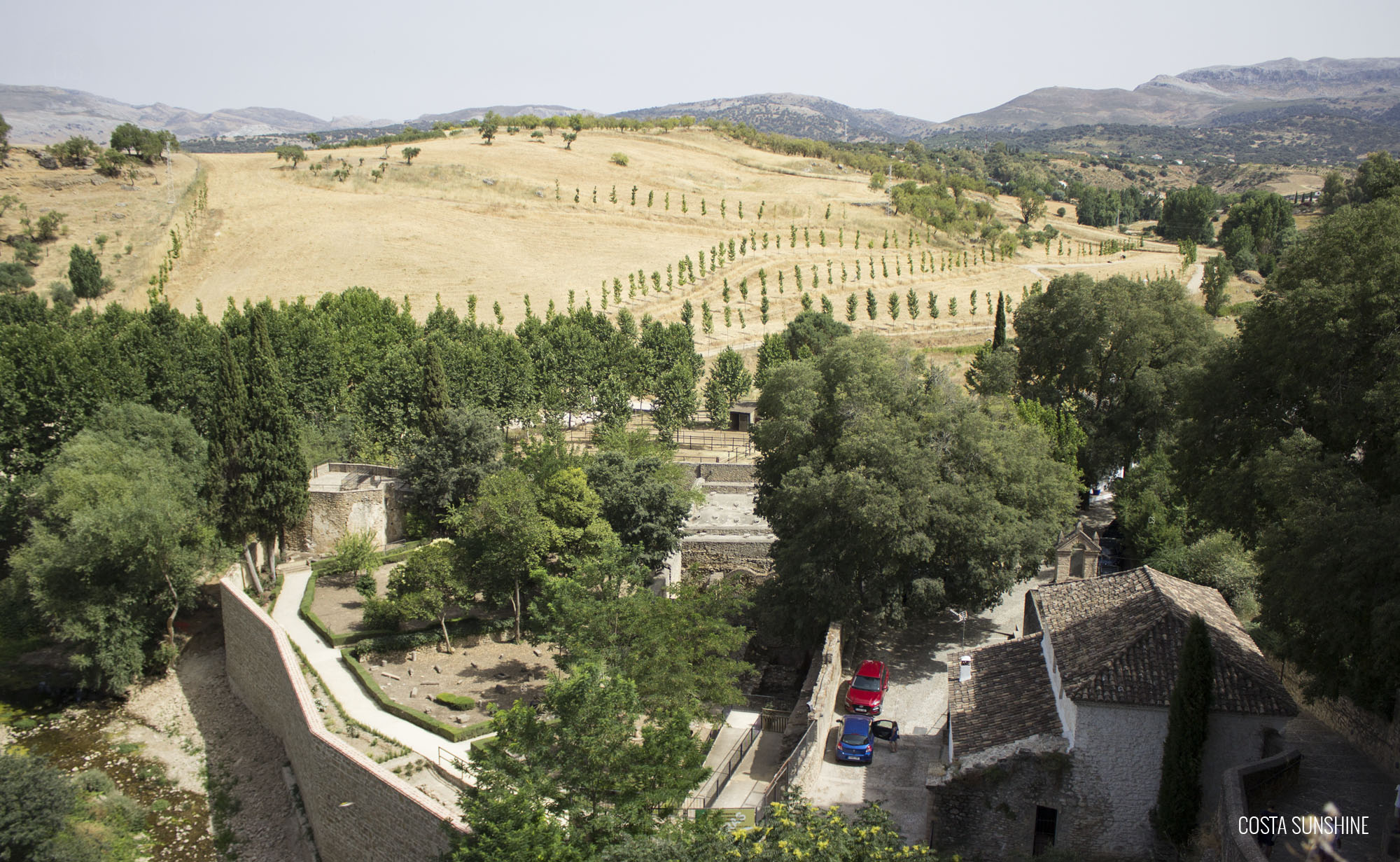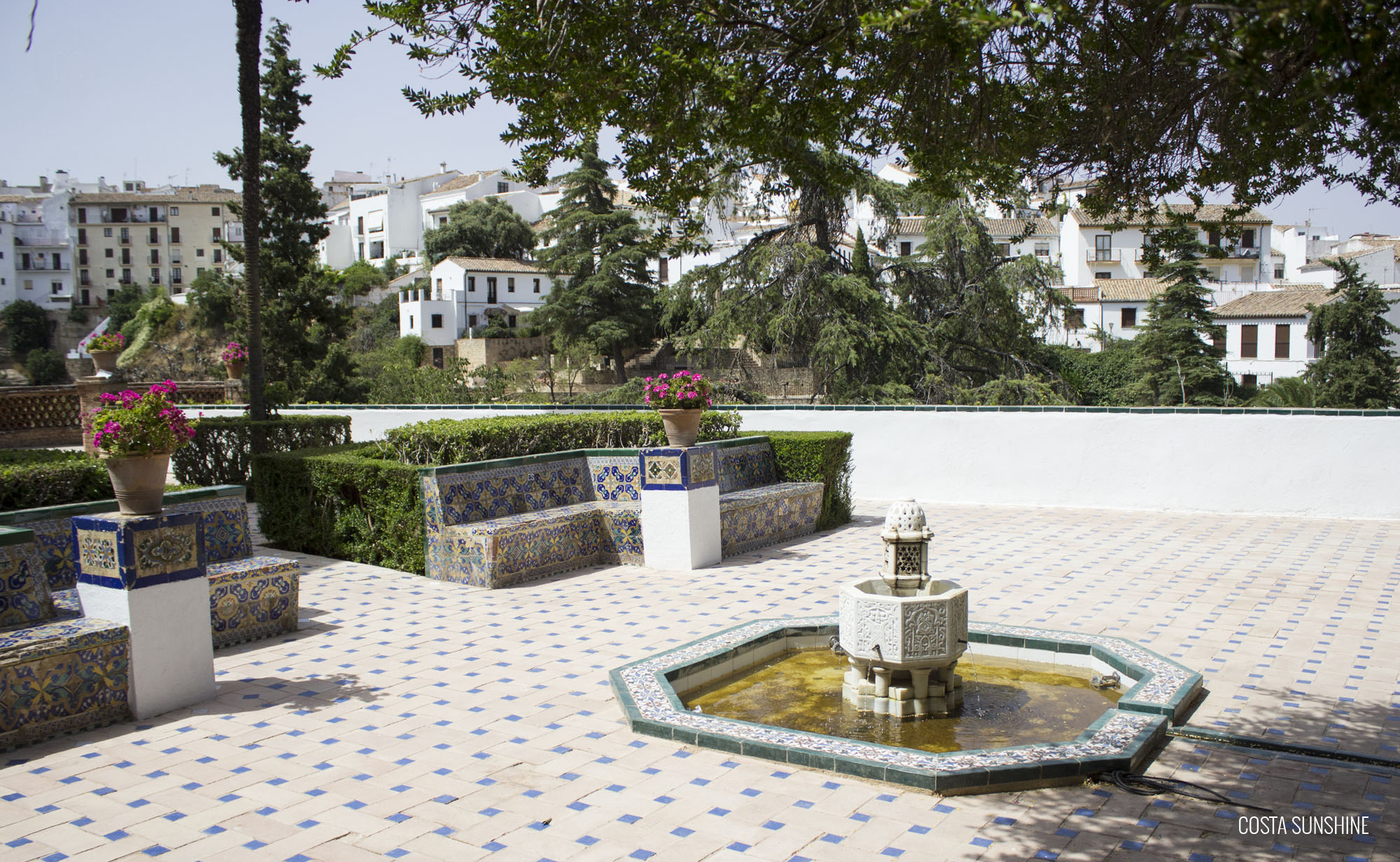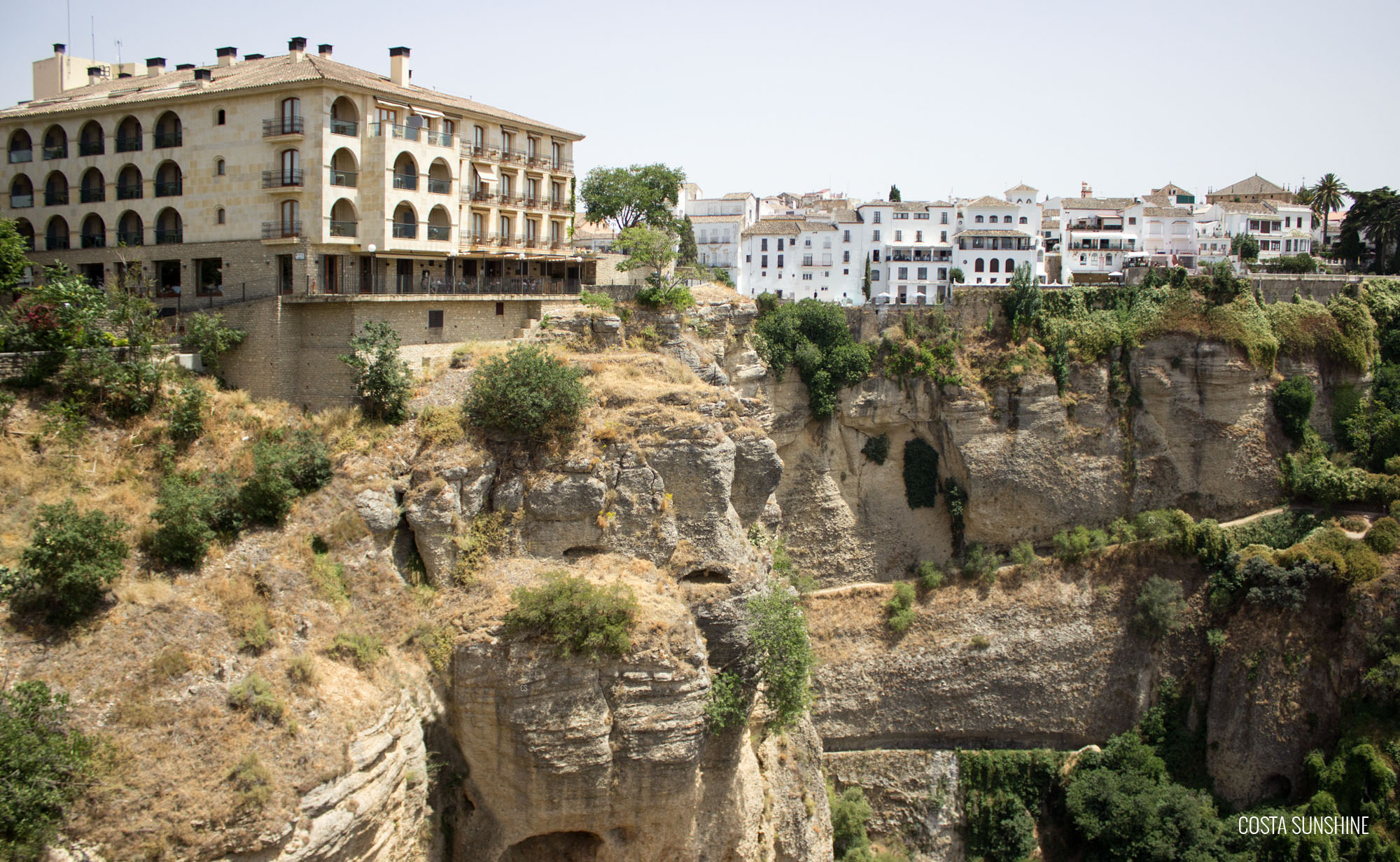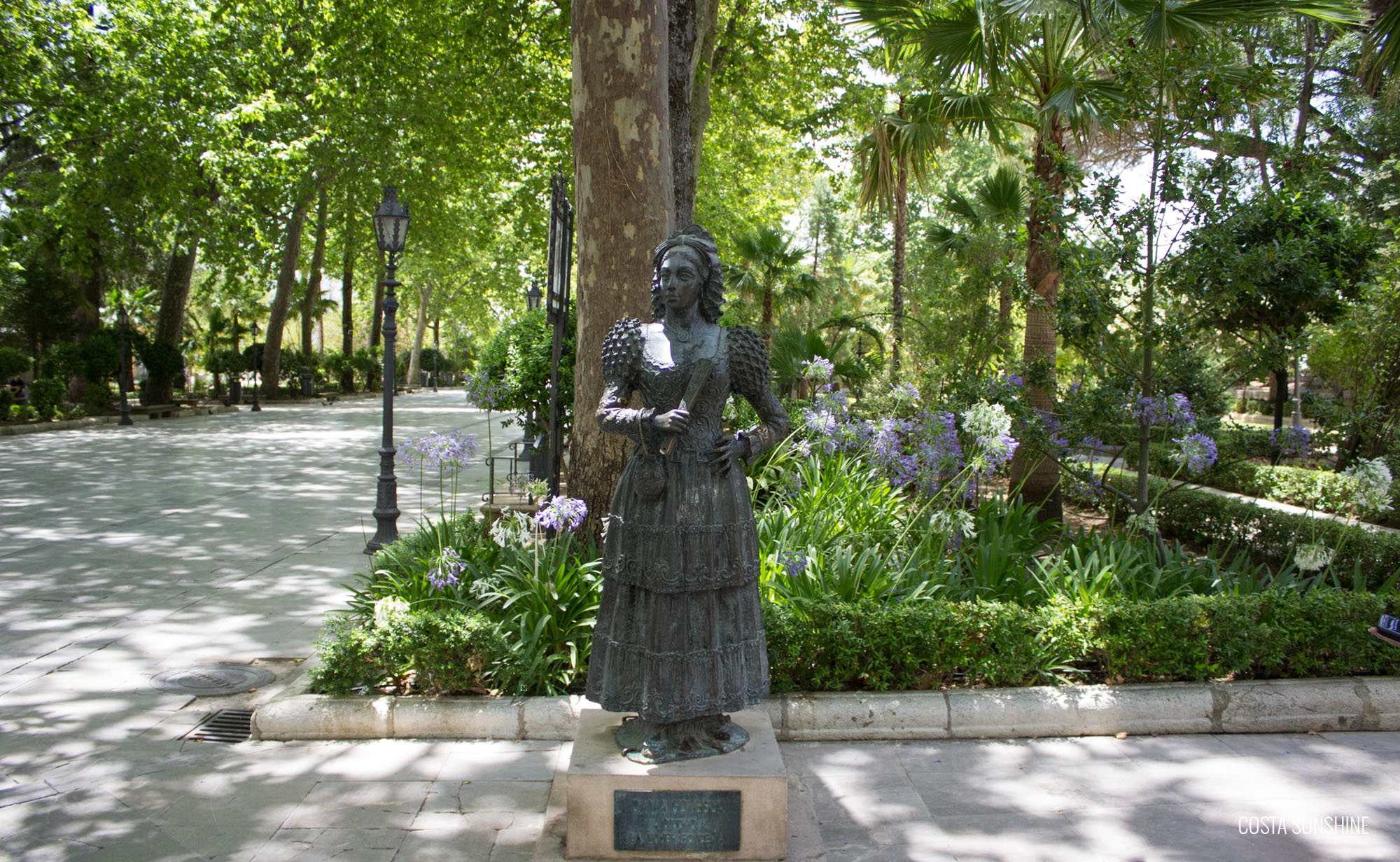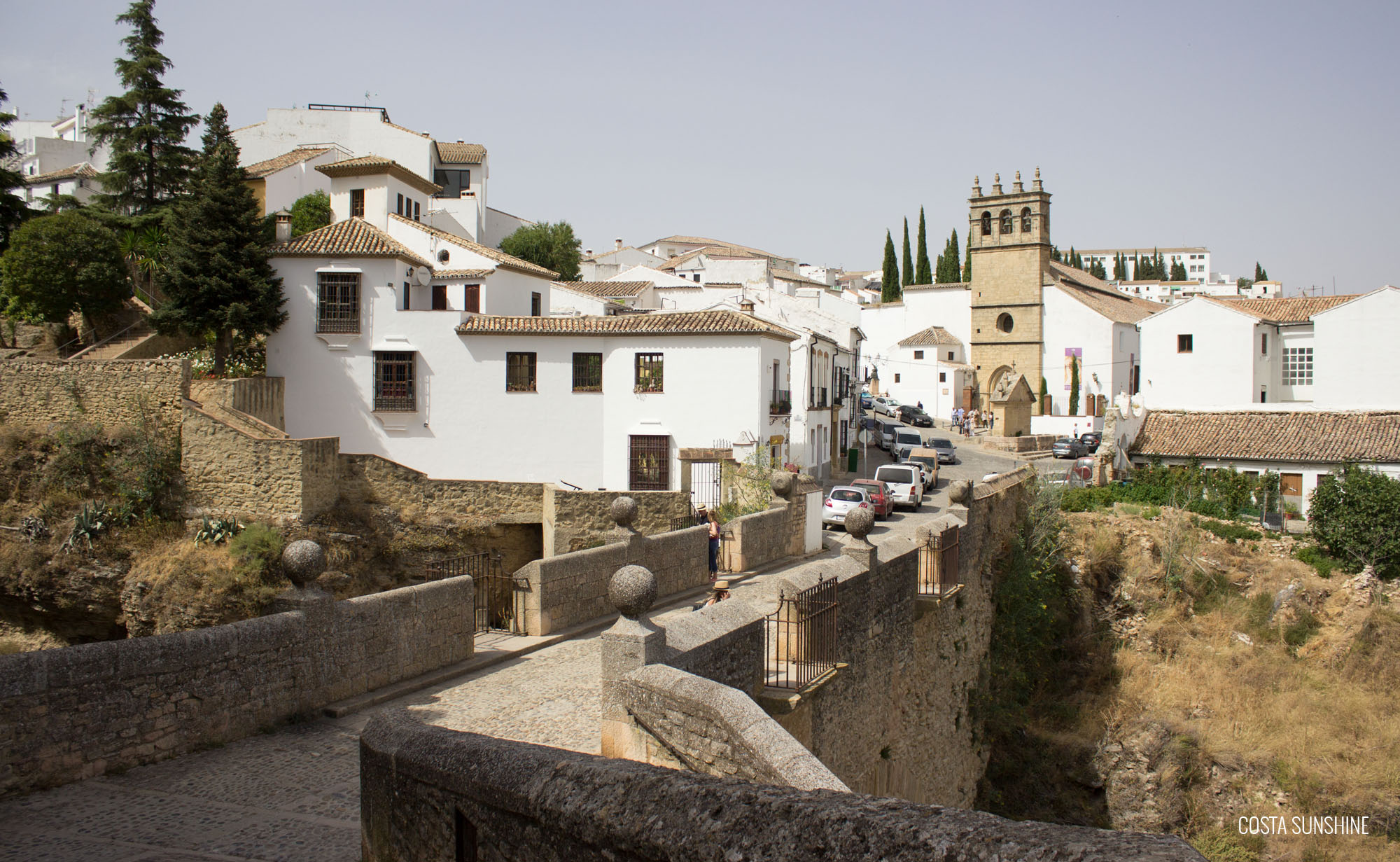Ronda is a town situated about 100 kilometres north-west of Málaga. It lies 723 metres above sea level and is divided into two parts separated by the canyon "Tajo de Ronda": the old historic center and a newer part called "Mercadillo". These two parts are connected by a 100 metre deep bridge – one of the most and frequently photographed construction in this municipality. The town is surrounded by numerous mountains: to the east there is the Sierra de las Nieves mountain range, to the south the Valle del Genal Natural Park, to the west the Sierra Grazalema Natural Park and to the north towards Campillos there are flat areas.
About 20 kilometres southwest of the city you will finde the "Cueva de la Pileta". Archaeologists have discovered numerous murals in the cave, which indicate that between 18.000 and 15.000 B.C. people lived in this area. But it was the Moors that gave Ronda its charm, which is still unattainable today. In 711 they conquered large parts of Andalusia. In 713 they took Ronda. The Moorish Empire remained constant for a long time under the Caliphate of Córdoba. In the 11th century, however, there were conflicts between various territorial rulers. The Moorish empire broke and disintegrated into a series of small kingdoms, the so-called "Taifas". In this time Abu Nur Hilal Ben Abi Qurra came to power in Ronda. During his reign most of the monuments were created in the municipality, which were partly rebuilt and adapted to the new conditions by the Romans after the Reconquista.
In Ronda you should definitely consider the following cultural assets. The most important feature of the municipality is the canyon "Tajo de Ronda" with the bridge "Puente Nuevo". But also the old city bridge Puente Viejo, the Arab baths and the house of the Moorish king should not be forgotten when visiting the municipality. Other sights are the church of the "Nuestra Señora de la Merced Ronda", the fountain "Fuente de los ocho caños", the church "Nuestro Padre Jesús Nazareno", the park "Blas Infante", the "Paseo de Moritz Willkomm", the bullring and the old city walls. (Editor/Photos/Video: Michael Trampert)
